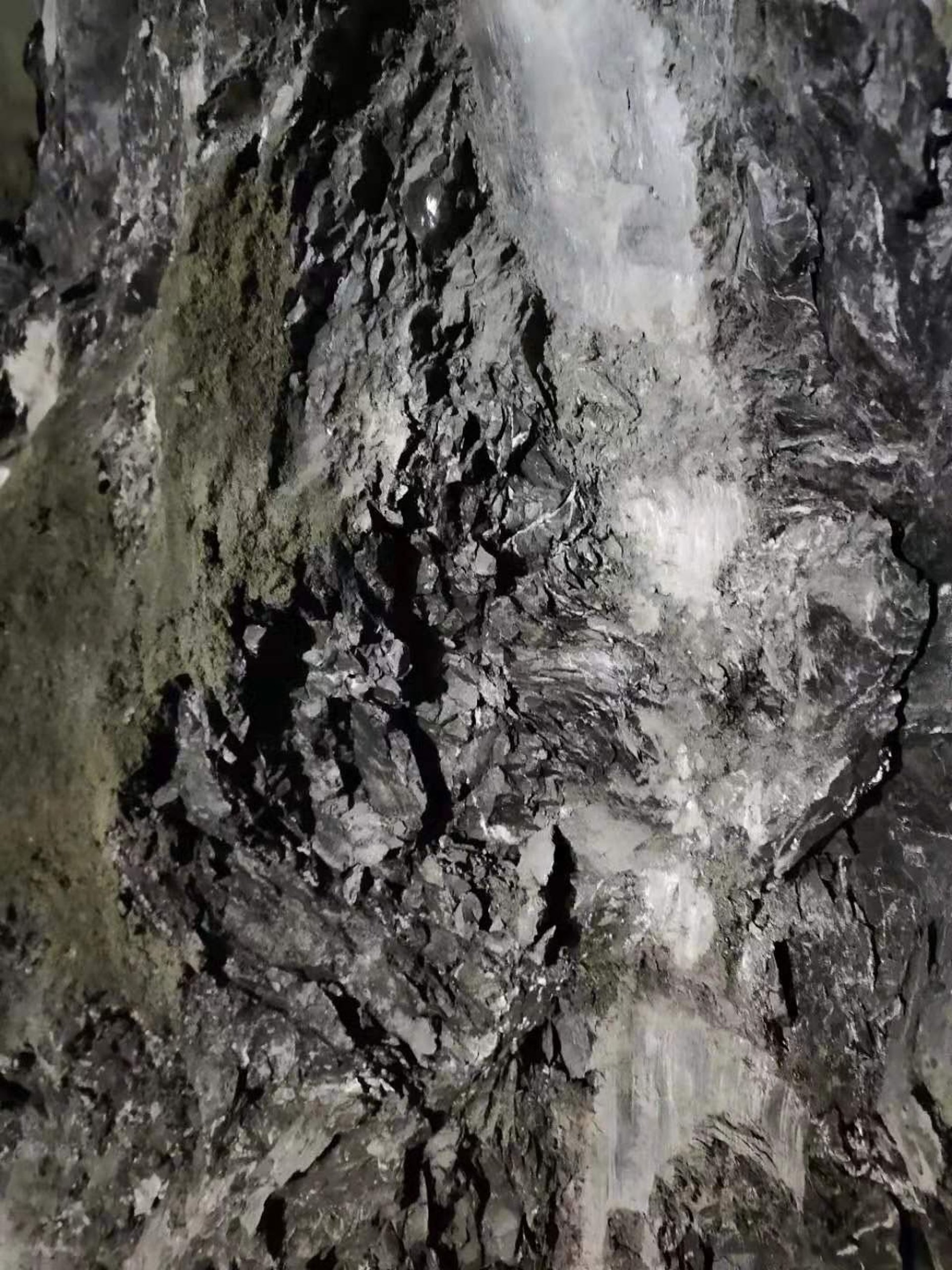
Mineral Systems and Ore Formation: A Framework for Spatial Targeting
Xuan-Ce Wang
11/17/202411 min read


Abstract
Traditional geological models of ore deposits have provided valuable insights into the processes that lead to the concentration of economically valuable minerals. However, these models have limited predictive power at a regional scale. The Mineral Systems approach offers a more comprehensive framework by considering ore deposits as integral components of larger-scale fluid-driven systems. This approach emphasizes the generic aspects that unify diverse ore systems, focusing on the physical processes governing fluid flow and the lithospheric architecture that provides the context for these processes. The concept of Self-Organized Criticality (SOC) is introduced as a mechanism to explain the generation of concentrated fluid fluxes required for significant metal accumulations. Evidence supporting the role of SOC in ore formation includes the power-law size-frequency distribution of deposits, their fractal spatial patterns, and evidence for multiple transient fluid pulses during their formation. The implications of this framework for exploration targeting are discussed, highlighting the importance of identifying threshold barriers to flow, targeting paleo-overpressured reservoirs, understanding conduit systems, recognizing favorable structural architectures, and targeting specific periods in terrane evolution favorable for ore formation.
Keywords: Mineral Systems, Ore Formation, Exploration Targeting, Self-Organized Criticality, Fluid Flow, Lithospheric Architecture.
1. Introduction: Traditional Ore Deposit Models vs. The Mineral Systems Approach
Traditional ore deposit models, while useful for describing specific ore deposit types, have limitations in terms of their applicability for global mineral exploration. They often focus on detailed, site-specific attributes of individual deposits, which may not be universally applicable to all deposits within a given class. This can result in complex genetic models at the microscale that are inappropriately applied to the deposit or district scale, limiting their value for global mineral exploration. Additionally, traditional models can struggle to explain the genesis of entire deposit groups due to a lack of consensus regarding the source of the ore-forming fluids and the geological processes involved.
The Mineral Systems approach offers a more holistic and comprehensive framework for understanding ore deposit formation and aiding in exploration targeting. This approach integrates information across various time and terrane scales by considering four key components:
l Geodynamics (Tectonic Setting): This component considers the large-scale tectonic processes responsible for generating conditions favorable for ore formation, such as subduction zones, continental collisions, and rifting events.
l Fertility (Source of Ore and Hydrothermal Fluid Components): This component focuses on identifying the sources of the ore metals and the fluids that transport them. These sources can include magmatic intrusions, metamorphic devolatilization, and deep-seated fluids derived from the mantle.
l Architecture (Fluid Plumbing Systems): This component analyzes the structural and lithological frameworks that control fluid migration, focusing on features like faults, shear zones, and permeable rock units. These structures act as pathways for the ore-forming fluids to travel from their source to the depositional site.
l Preservation (Degree of Post-Ore Uplift and Erosion): This component evaluates the post-mineralization tectonic processes that determine whether a deposit is preserved at economically viable depths or eroded away.
The Mineral Systems approach emphasizes the interplay of these components, recognizing that ore deposits form due to the conjunction of favorable conditions across multiple scales. By focusing on the generic aspects that unify diverse ore systems, the Mineral Systems approach can identify key measurable parameters that aid exploration, moving beyond the limitations of traditional models. It emphasizes the importance of understanding the large-scale fluid flux systems that concentrate metals and the dynamic processes that drive these systems. This holistic perspective allows geologists to "see the wood for the trees" and develop universally applicable genetic models for deposit classes, ultimately improving exploration targeting efforts.
2. The Mineral Systems Concept: Importance of Fluid Flow in the Mineral Systems Approach
The Mineral Systems approach provides a framework for understanding the formation of ore deposits by considering the interplay of key geological factors. This approach emphasizes the crucial role of fluid flow in transporting and concentrating ore-forming components.
Lithospheric architecture and history are fundamental in dictating patterns of fluid flow and controlling where ore deposits form. The sources emphasize that the physical processes governing dynamic and focused fluid flux, within the context of the lithospheric architecture and history, are key elements in the Mineral Systems framework.
Permeability, controlled by structures like faults and shear zones, is critical for fluid migration. These structures can act as conduits for fluids to travel from source regions to depositional sites. The scale and connectivity of these structures directly influence the size and economic viability of ore deposits.
Large, lithosphere-scale faults are particularly important for delivering high fluid fluxes from the mantle or lower crust to shallower levels. Magneto-telluric surveys can help identify these deep-seated structures, aiding in exploration efforts.
3. Examples of Fluid Flow in Mineral Systems
Orogenic gold deposits: These deposits form in convergent tectonic settings associated with subduction. Fluids are derived from either the devolatilization of subducted oceanic slabs or the release of fluids from metasomatized mantle lithosphere. Lithosphere-scale faults act as conduits for these auriferous fluids, transporting them to shallower crustal levels where gold deposition occurs.
Porphyry-related deposits: This group encompasses porphyry Cu-Au, high-sulfidation epithermal, and skarn deposits. They form in convergent margin settings above oxidized granitic plutons. Finger-shaped porphyritic intrusions act as the primary fluid conduits, with long-lived magmatic-hydrothermal fluids exsolved from these intrusions leading to the formation of vertically and laterally zoned ore deposits.
Volcanogenic Massive Sulfide (VMS) deposits: These deposits often form in submarine volcanic environments. Fluid flow is crucial for transporting metals leached from volcanic rocks and depositing them as sulfide minerals. Stockwork zones beneath massive sulfide lenses represent the pathways of these hydrothermal fluids.
4. Role of Lithospheric History
The history of a particular region also plays a crucial role in ore formation.
Previous tectonic events can leave behind structural weaknesses and metasomatized zones in the lithosphere that can influence subsequent fluid flow patterns and ore deposition.
For example, craton margins are often sites of significant mineralization due to their long-lived history and structural complexity. Fluids derived from metasomatized mantle lithosphere are channeled along these margins, leading to a variety of deposit types.
5. Importance of Threshold Barriers
One key aspect of fluid flow highlighted in the sources is the importance of "threshold barriers". These are zones of low permeability that impede fluid flow, leading to a build-up of fluid pressure. When the fluid pressure exceeds the strength of the barrier, a sudden release of fluids can occur, resulting in the formation of ore deposits. This process is described as a "Self-Organized Critical (SOC) System", where ore formation is a byproduct of transient periods of anomalous dynamics in fluid flux systems.
The sources explain that:
Identifying these paleo-overpressured reservoirs is crucial for exploration targeting.
Understanding the relationship between ore deposits and their host conduit systems is critical for near-mine exploration programs.
Key Takeaways
In conclusion, the Mineral Systems approach underscores the significance of fluid flow in controlling ore formation.
Lithospheric architecture, particularly structures that facilitate or impede fluid flow, plays a critical role in determining where and how ore deposits form.
Recognizing the influence of lithospheric history, including past tectonic events and metasomatic processes, is essential for understanding the distribution of ore deposits.
The concept of threshold barriers and SOC systems provides a framework for understanding the dynamic processes that drive focused fluid flux and lead to the formation of economically significant ore deposits.
By considering these factors, the Mineral Systems approach offers a valuable tool for mineral exploration targeting and for developing a deeper understanding of ore genesis.
Self-Organized Criticality (SOC) and Ore Formation:
Self-Organized Criticality (SOC) describes a specific type of complex system, first defined by Bak et al. (1987), which exhibits certain key characteristics. These characteristics are relevant to understanding the formation of ore deposits because they provide insights into the dynamic processes involved in concentrating ore-forming fluids.
6. Key Characteristics of SOC Systems:
Scale-invariant power-law behavior: The magnitudes of energy release events within SOC systems follow a power-law distribution. This means that small events are much more frequent than large events, and the relationship between their size and frequency follows a predictable pattern.
Fractal spatial manifestation: The spatial distribution of components within SOC systems exhibits fractal characteristics, meaning that similar patterns repeat across different scales.
Extremal dynamics: Energy release events ("avalanches") in SOC systems tend to initiate at points of weakness, where the resistance to flow is lowest.
Evidence for SOC in Ore-Forming Systems:
Several lines of evidence suggest that many, if not most, ore-forming systems exhibit SOC characteristics:
Power-law size frequency distributions of mineral deposits: This observation aligns with the scale-invariant power-law behavior observed in SOC systems. It suggests that the processes controlling the size of ore deposits are similar across a wide range of scales.
Fractal spatial distribution of mineral deposits: Studies have shown that the spatial arrangement of mineral deposits within a region often follows fractal patterns, further supporting the application of SOC concepts to ore formation.
Evidence for episodic fluid flow and multiple transient events: Many ore deposits exhibit textures and structures indicative of episodic fluid flow and multiple periods of mineralization. This is consistent with the concept of "avalanches" or sudden releases of fluids in SOC systems.
Localized threshold barriers to flow: Ore-forming systems frequently involve localized zones of low permeability that act as barriers to fluid flow. These barriers can lead to the build-up of fluid pressure and eventually trigger sudden releases of fluids, driving ore formation.
Relevance of SOC to Ore Formation:
The sources argue that SOC behavior is crucial for ore formation because it provides a mechanism for generating the concentrated fluid fluxes required for significant metal accumulations. Conventional convective fluid flow throughout the crust is typically impeded by low background permeability. SOC systems overcome this limitation by creating localized, focused fluid flow events ("avalanches") driven by pressure build-up behind threshold barriers.
7. Examples of SOC in Ore-Forming Environments:
Here are a few examples illustrating how SOC principles might operate in different ore-forming settings:
Orogenic gold deposits: In convergent tectonic settings, fluids released from dehydrating subducted slabs or metasomatized mantle can be trapped beneath low-permeability zones. The build-up of fluid pressure eventually breaches these barriers, leading to the focused flow of auriferous fluids along large-scale faults, which can ultimately result in the formation of orogenic gold deposits.
Porphyry copper deposits: In magmatic-hydrothermal systems associated with porphyry copper deposits, the exsolution of magmatic fluids can be episodic, driven by pressure fluctuations within the magma chamber. These episodic fluid pulses can fracture surrounding rocks and create pathways for the flow of metal-rich fluids, leading to the formation of stockwork veining and disseminated mineralization characteristic of porphyry systems.
Sediment-hosted base metal deposits: In sedimentary basins, fluid flow can be driven by compaction, topographic gradients, or thermal convection. Low-permeability layers within the basin can act as barriers, leading to the accumulation of metal-rich brines. Seismic events or other tectonic disturbances can trigger the release of these brines, focusing fluid flow along specific pathways and potentially leading to the formation of stratabound base metal deposits.
Implications for Exploration:
Understanding the principles of SOC and their relevance to ore formation can significantly enhance exploration targeting strategies:
Identification of paleo-overpressured reservoirs: Recognizing geological features indicative of past fluid pressure build-up can help explorers pinpoint areas with a higher probability of hosting ore deposits. These features might include breccia pipes, hydrothermal alteration halos, or structural evidence of fault reactivation.
Focus on lithospheric architecture and history: Understanding the large-scale tectonic framework and the history of a region, including past episodes of fluid flow, is essential for predicting favorable areas for ore formation. This knowledge can guide exploration towards specific structural settings, lithological units, or time periods associated with enhanced fluid flow and mineralization potential.
In conclusion, the concept of Self-Organized Criticality provides a valuable framework for understanding the dynamic and episodic nature of fluid flow in the Earth's crust, which is crucial for the formation of economically significant ore deposits. By considering the characteristics of SOC systems and the interplay of lithospheric architecture and fluid flow history, exploration efforts can be more effectively targeted towards areas with the highest potential for mineralization.
8. Practical Implications of the Mineral Systems Approach and SOC for Exploration Targeting
The Mineral Systems approach and the concept of Self-Organized Criticality (SOC) have significant practical implications for mineral exploration targeting. These concepts provide a framework for understanding the key geological factors controlling ore formation, which can help explorers identify areas with high mineralization potential and develop effective strategies for targeting new deposits.
Targeting Strategies Based on Mineral Systems and SOC:
Here are some specific exploration targeting strategies based on these concepts, as highlighted in the sources and our conversation history:
Identify Favorable Geodynamic Settings: The first step in exploration targeting should involve identifying regions that have experienced the appropriate geodynamic processes for the formation of the desired mineral deposit type. For example:
Orogenic gold deposits are typically associated with convergent tectonic settings, particularly those involving subduction.
Porphyry-related deposits form in convergent margin settings where subduction-related magmatism occurs.
Sediment-hosted base metal deposits often form in intracratonic rifts or back-arc extensional environments where sedimentary basins develop.
Focus on Craton and Thick Lithosphere Margins: The sources specifically highlight the importance of craton and thick lithosphere margins as favorable sites for a variety of mineral deposit types. These margins represent long-lived zones of structural complexity and often have a history of metasomatism, making them ideal settings for the generation and preservation of ore deposits.
Identify Potential Paleo-Overpressured Reservoirs: A key aspect of the SOC concept is the presence of localized threshold barriers that lead to the build-up of fluid pressure and the episodic release of fluids. Identifying areas where these paleo-overpressured reservoirs might have existed is crucial for targeting new deposits. Geological features indicative of past fluid pressure build-up can serve as proxies for these reservoirs, including:
Breccia pipes:These pipe-like bodies of fragmented rock can form due to explosive fluid release events associated with SOC systems.
Hydrothermal alteration halos: Extensive alteration zones surrounding mineral deposits can indicate the pathways of focused fluid flow driven by pressure build-up and release.
Structural evidence of fault reactivation: Repeated episodes of fault movement can create zones of enhanced permeability and act as pathways for episodic fluid flow associated with SOC systems.
Utilize Geophysical Methods to Identify Deep Structures and Anomalies: Geophysical techniques can play a critical role in identifying favorable structures and fluid pathways at depth.
Magneto-telluric (MT) surveys are particularly effective for identifying lithosphere-scale faults that can act as major conduits for fluid flow from the mantle or lower crust.
Magnetic and gravity surveys can help pinpoint mafic-ultramafic intrusions, which are often associated with Ni-Cu-PGE deposits.
Electromagnetic (EM) and induced polarization (IP) surveys can detect zones of sulfide mineralization and alteration associated with a variety of deposit types.
Target Amphibolite-Facies Metamorphic Domains: For orogenic gold deposits, the sources suggest that amphibolite-facies metamorphic domains can be valid exploration targets, particularly for hypozonal deposits that form at deeper crustal levels. These domains represent areas where metamorphic reactions release fluids and create pathways for auriferous fluid flow.
Consider the Role of Lithocaps: For porphyry-related deposits, the presence of lithocaps (extensive zones of advanced argillic alteration) can indicate systems at a suitable exhumation level for exploration. Mapping and remote sensing can help identify lithocaps, providing valuable information for targeting.
Evaluate the Fertility of Intrusive Belts: For porphyry-related deposits, assessing the fertility of intrusive belts using whole-rock geochemistry and fertility ratios can help distinguish between prospective and less prospective areas. However, it's important to note that whole-rock geochemistry and geophysical methods alone cannot distinguish between individual productive and barren intrusions. Systematic drilling is ultimately required to determine the economic potential of each porphyry system.
Recognize the Importance of Fluid Conduits and Their Relationship to Ore Deposition: In structurally hosted ore systems, understanding the nature and geometry of fluid conduits is crucial for near-mine exploration. Ore-fluid conduits can be much more extensive than the individual hosting structures. Exploration efforts should focus on tracing these conduits to identify potential ore deposition sites at different structural levels or within different lithological units.
9. Conclusion
The Mineral Systems approach represents a paradigm shift in mineral exploration, moving from deposit-scale studies to a more holistic, system-scale perspective. This review has highlighted several key findings and future research directions:
Critical Components: Successful mineral systems require the convergence of favorable geodynamics, fertility, architecture, and preservation conditions. Understanding the interplay of these components across various scales is crucial for developing predictive models.
Self-Organized Criticality (SOC): Integrating SOC concepts with the Mineral Systems approach offers valuable insights into the episodic and localized nature of ore formation. This framework emphasizes the importance of fluid pressure build-up and release along focused pathways.
Prospective Regions: Craton and thick lithosphere margins emerge as highly prospective areas for diverse mineral deposit types, owing to their long-lived structural complexity, multiple metasomatic episodes, and favorable preservation potential.
Future research should focus on:
Characterizing the specific structural architectures conducive to SOC systems and ore formation.
Developing quantitative predictive models that incorporate fluid flow dynamics, geochemical gradients, and spatial distribution of geological features.
Enhancing our understanding of deep-seated mineral systems originating from the mantle lithosphere through geophysical investigations, geochemical studies, and numerical modeling.
Improving methods for integrating and analysing multidisciplinary datasets, including geological mapping, geochronology, geochemistry, geophysics, and remote sensing.
By addressing these research priorities, the Mineral Systems approach can be further refined and leveraged to improve the efficiency and success rate of mineral exploration efforts. As discovery rates decline and the demand for minerals continues to grow, this holistic framework offers a promising path forward for identifying new exploration targets and unlocking the mineral resources needed to support sustainable development."








